Medicinal plants in the garden: 8 plants with properties
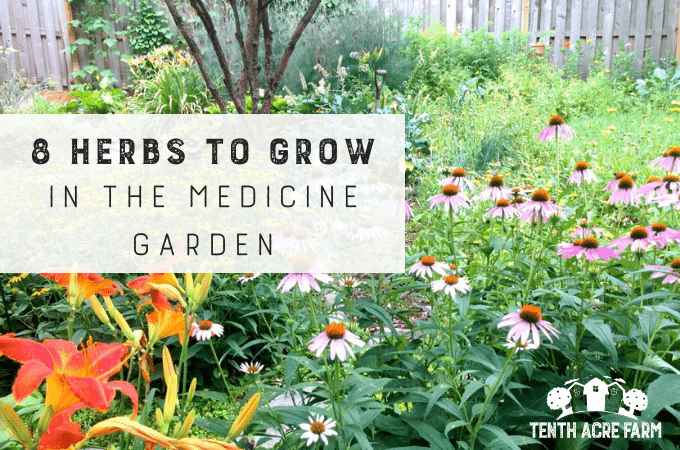
Surely you have heard of natural remedies such as chamomile for conjunctivitis or onion for colds. Many are centuries-old recipes, typical grandmother’s remedies that can be very useful for healing. Unfortunately, in some cases the use of these medicinal plants is forgotten.

The lower use of medicinal plants is due, among other things, to how comfortable it may seem to take a pill or apply a prepared medicine. Also because of the accessibility to plants, which is more difficult in cities. In any case, we can always find them in herbalists and other specialized stores, or even cultivate these medicinal plants in the garden, as we will see today!
Benefits of medicinal plants in the garden
Many times, natural remedies with medicinal plants are more than enough to cure ailments and do not have adverse effects or contraindications, as can occur with medications.
In addition to healing people, there are medicinal plants that are also useful for «healing the garden.»
There are many medicinal plants of this type that we can grow in the garden: garlic, onion, basil… Their aromas drive away harmful insects that can become pests, and some are also used to prepare natural remedies to treat pests and diseases.. In addition, with these plants we can prepare beneficial remedies for our health or to cure ailments and they are also used for cooking.THEY ARE ALL ADVANTAGES!!
Other of these medicinal and aromatic plants attract beneficial insects, such as pollinators (bees are one of the most important), or natural enemies that feed on pests and help us fight them. We already talked about these things in posts like « Flowers in the garden » or « Aromatics in the garden: which ones and why «.
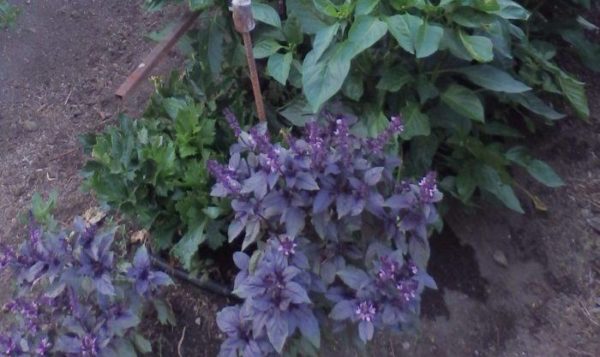
Remedies with medicinal plants
Infusion
Boiling water is added to a container where the herbs are cut. It is covered and allowed to stand for a while to extract the beneficial substances into the water. When it has cooled, strain it with a cloth or a strainer. You can sweeten the infusion with honey or sugar.
decoction or cooking
The plant is thrown into cold water or another liquid. It is heated in a pot until it cooks, and it is kept boiling for the indicated time. Then it is strained through a cloth, pressing with the fingers to squeeze out the herbs or leaves.
Maceration or hydroalcoholic extract
To extract all the medicinal principles of the plants by this method, cold water with alcohol, vinegar or wine is poured over the chopped or crushed plants. It is left to macerate for hours, days or even weeks (depending on the remedy). After maceration, it is filtered or strained, draining the residues well so that they release all the beneficial compounds.
Syrup
It is prepared with water and sugar in the indicated proportions, heating the mixture of plants, water and sugar until the sugar dissolves completely (but without boiling). As in the rest of the cases, it is filtered at the end through a clean cloth to obtain a smooth syrup without traces of leaves or herbs.
8 Medicinal plants for the garden and home remedies
As I told you at the beginning of the post, there are plants that have a double benefit: making preparations to heal us (creams or preparations to apply in blows, depurative infusions…) and also have an important role in the garden (useful for cooking and to improve the health of the rest of our crops).
I have made a compilation with some of these useful plants in the organic garden that will help us to have a more natural life and garden:
- Holly
- Garlic
- Basil
- Blueberry or bilberry
- Flowers: calendula, mauve…
- Cabbage
- Turnip
- Clover
What does basil cure or what are the medicinal properties of garlic?
What other medicinal plants can be grown in a garden? Next we will see what species to include in a medicinal garden: hedges, herbs for healing and aromatic plants with beneficial properties that will help us prepare natural medicines.
1. Holly (Ilex Aquifolium)
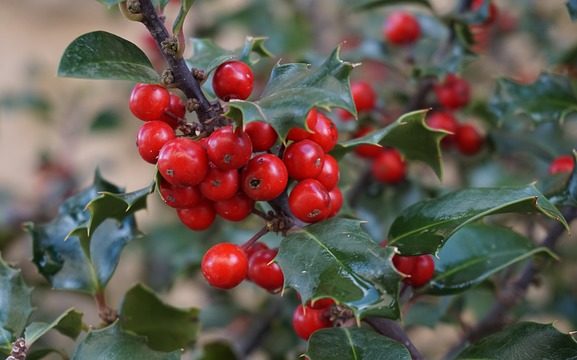
The holly is one of the useful plants for the garden, like many other hedges that we already saw in the post «Interesting species for hedges in the organic garden».
In addition to these uses, it is one of the healing plants that we can have in our organic garden, as it is very useful as an anti-inflammatory to treat arthritis and rheumatism and help improve kidney function.
In addition, holly has antibacterial activity that can be used for digestive conditions, as it is effective against infections caused by Escherichia coli, Enterobacter aerogenes or Salmonella.
You can make an infusion of holly by preparing a decoction with 30-40 grams of leaves in a liter of water.
2. Garlic (Allium sativum)
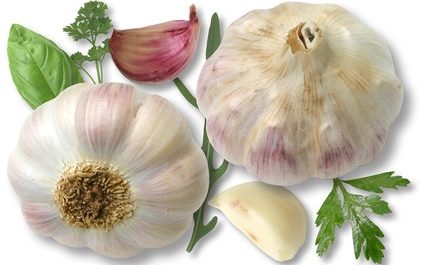
In addition to being a very useful plant to prepare natural remedies against pests and diseases in the garden, garlic is one of the best known plants to cure. Among its most common properties, its effectiveness against digestive conditions, such as the stomach, stands out.
In addition, garlic is antimicrobial, so it will help you with respiratory or digestive problems when you have some type of bacteria, it also helps to secrete gastric juices and favors the elimination of gases.
This garden plant is also used to improve circulation, including for acne problems. It is essential in the kitchen and very useful for curing diseases of people and plants thanks to its antibacterial and antifungal properties.
3. Basil (Ocimum basilicum)
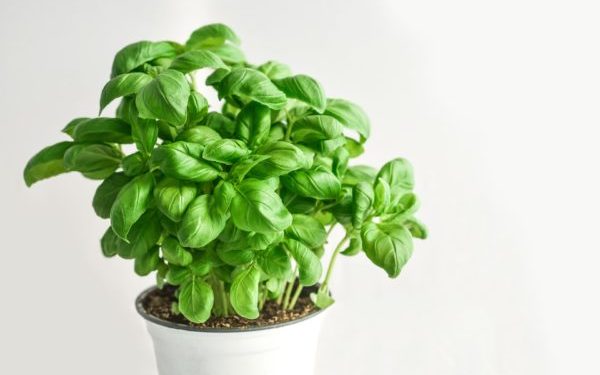
Basil is a delicious plant for cooking and very useful in the garden as a pest repellent. In addition, in traditional medicine this plant is used when it is in bloom to make infusions that are very effective against vomiting and nausea, in pregnancies, for example.
Prepare an infusion with 10 grams of basil leaves in 1 liter of water. Basil, as we have seen in other posts, has a lot of health benefits.
If you want you can grow basil at home, even in pots. It is easy to grow and not very demanding, as we saw in the post « How to plant basil ».
4. Blueberry or bilberry (Vaccinium myrtillus)

We have already seen how to grow this delicious wild fruit in the post « Wild fruits: grow blueberries and raspberries in the garden «.
The blueberry or bilberry, in addition to beautifying the orchard and serving as a hedge, has anti-inflammatory properties, so its berries are widely used to make effective natural remedies against inflammation of the mouth and throat. In addition, this small fruit is a great antioxidant, rich in vitamin C, flavonoids, anthocyanins and other phenolic acids that delay aging and prevent diseases.
A cranberry decoction can be made by boiling about 30 fresh berries or cranberries in a liter of water. After cooking, let cool slightly and filter. Later it will be used to make gargles or rinses that will be very effective against these problems.
5. Medicinal flowers
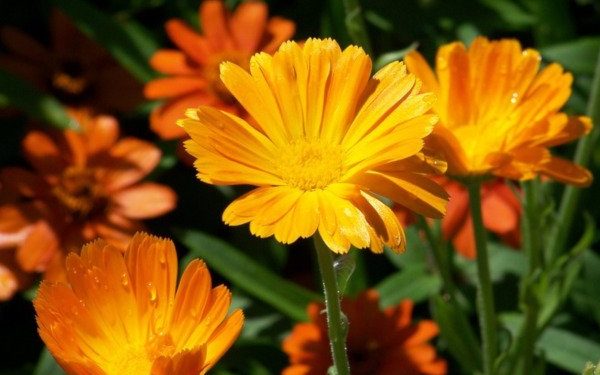
We know too well that many flowers in the garden are used to ward off pests or attract beneficial insects.
In addition, flowers such as calendula or mallow are plants to cure, for example, intestinal problems (a decoction of calendula will help fight diarrhea or vomiting).
Also the infusion based on flowers and dried leaves of malva will help you to remedy cough and is also good for stomach infections and against constipation.
6. Cabbage or cabbage
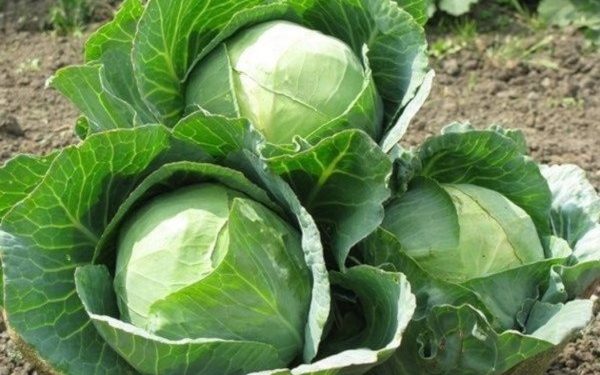
Boiled cabbage leaves serve to make an effective drink against coughs, hoarseness, chest colds, even help relieve bronchitis.
7. Turnip
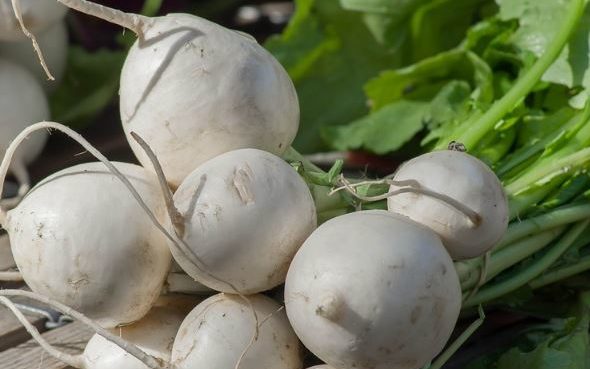
Turnip decoction is very effective in curing colds.
Peel the root and cut it into a few pieces. Cook it and, when the pulp of the turnip is soft, strain it and drink it warm with a teaspoon of honey.
8. Clover
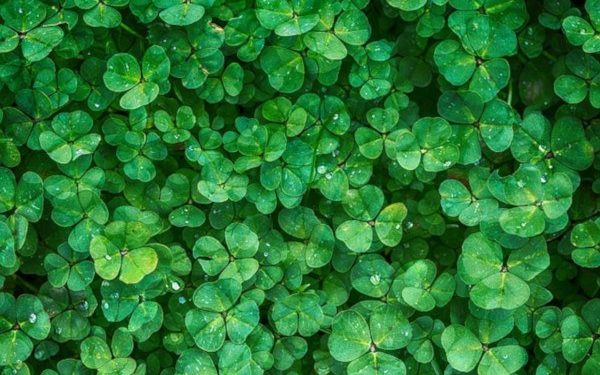
Perfect plant to use as green manure in the garden. Clover is also used as a medicinal plant, as it is very useful for making eye drops against conjunctivitis and other inflammations of the eyes and eyelids.
Make an infusion with 20-30 grams of clover and its flowers in a liter of water and, when it is cold, wash your eyes with it.
I hope you have found this collection of plant remedies to cure useful. I hope you can tell us in the comments below about more natural remedies made with plants!
IMPORTANT NOTICE: Medicinal plants must be taken under medical supervision. That they are natural does not imply that they are free of risks. Before taking them you should consult your doctor or pharmacist.
References
- Sánchez Govín, E. et al., 2000. Pharmacognostic study of Ocimum basilicum l. (white basil). Cuban Journal of Pharmacy, vol. 34 (3), p. 187-195.
- Domingo, D. & López-Brea, M., 2003. Plants with antimicrobial action. Spanish Journal of Chemotherapy, vol. 16, no. 4, p. 385-393.
- Erdemoglu, N. et al., 2009. Antibacterial, antifungal, and antimycobacterial activity of Ilex aquifolium leaves. Pharmaceutical Biology, vol. 47 (8), p. 697-700.
- Jiménez-Bonilla, V. & Abdelnour-Esquivel, A., 2012. Identification and nutritional value of some native blueberry (Vaccinium spp) materials. Technology on the Move, Vol. 26, no. 2, p. 3-8.
- Lara-Cortés, E. et al., 2013. Nutritional content, functional properties and conservation of edible flowers. Review. Latin American Archives of Nutrition, vol. 63, no. 3, p. 197-208.
- González, MM et al., 2014. Literature review on the therapeutic use of garlic. Cuban Journal of Physical Medicine and Rehabilitation, vol. 6 (1), p. 61-71

![Photo of Tradescantia Pallida or Purpurina: [Sowing, Care, Irrigation and Substrate]](https://www.complete-gardening.com/wp-content/uploads/2021/06/Tradescantia_pallida_1568322704-390x220.jpg)
![Photo of Diatomaceous Earth: [Definition, Uses, Application and Advantages]](https://www.complete-gardening.com/wp-content/uploads/2022/08/diatomaceous-earth-definition-uses-application-and-advantages-390x220.jpg)
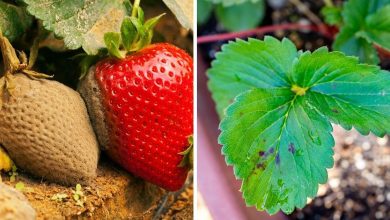
![Photo of Indoor Hanging Plants: [15 Examples + Care, Watering and Substrate]](https://www.complete-gardening.com/wp-content/uploads/2022/08/indoor-hanging-plants-15-examples-care-watering-and-substrate-390x220.jpg)